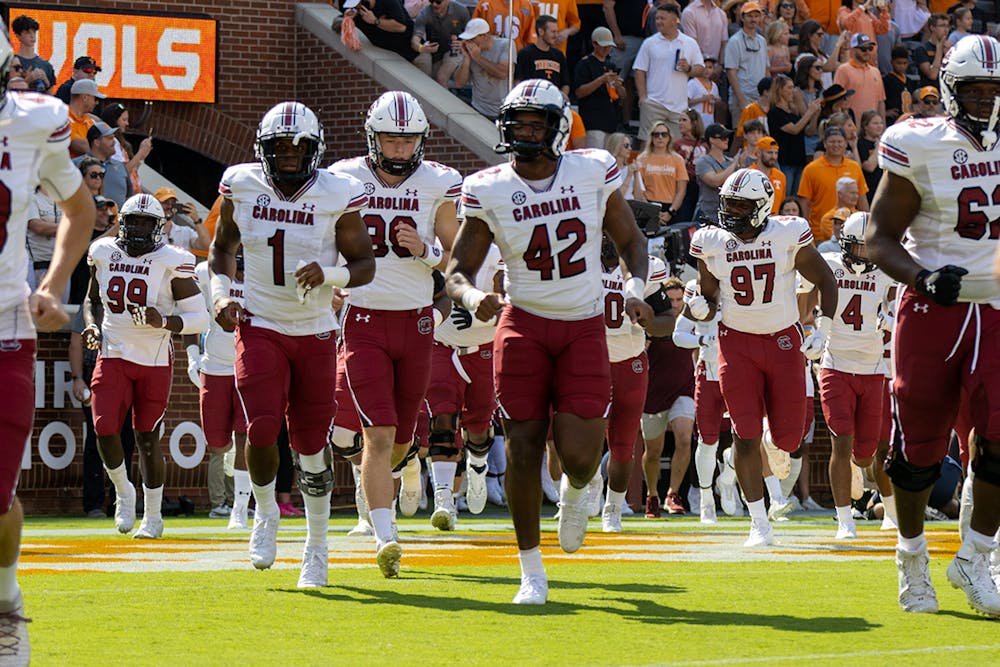The National Collegiate Athletic Association has capitalized on student athletic performance for decades. The recent NCAA v. Alston Supreme Court case decision serves as a fundamental advancement to restrict the capabilities of the NCAA and potentially improve the experience of college athletes.
The relationship between the NCAA and their athletes is chaotic. For decades, the NCAA has placed limits on financial compensation for athletes. Complications arose when individual universities began offering money to talented athletes, leading the NCAA to forbid all types of financial compensation to avoid turning college sports into business deals.
When universities didn’t comply, the NCAA adopted the “Sanity Code,” which served as the first legal opportunity for student athletes to be granted tuition aid. The "Sanity Code" was originally adopted in 1948, but in 1984 the Court used the it to declare compensation restrictions.
Additionally, the code outlined consequences of suspension or expulsion for athletes who received unlawful money. Since the “Sanity Code” was introduced, the NCAA has allowed several opportunities for compensation — but these approvals don’t come easy.
In the NCAA v. Alston case, two former athletes aimed to prove the NCAA was in violation of federal antitrust law. The argument claimed the NCAA generates enormous sums of money, yet the athletes receive no reimbursement for their efforts. Instead, the money is used to pay university presidents, athletic directors and other university expenses.
The NCAA responded that providing compensation for athletes might “blur the distinction between college sports and professional sports.”
It’s entirely true a clear separation of college and professional sports is necessary. If college sports offered the same financial opportunities to athletes as professional sports, there would be much less incentive for athletes to continue their careers professionally and the principles of the NCAA would be disturbed.
However, the court’s decision did not blur any lines. The justices unanimously agreed upon academic reimbursement.
Under these regulations, athletes could be provided compensation in an educational context including graduate school scholarships, tutoring services, etc. Furthermore, student athletes could be granted academic cash awards totaling a maximum of $5,980 per year.
Educational reimbursement creates a more distinct separation between collegiate and professional sports, because it’s not something professional leagues have the option to provide.
Further limitations on academic benefits are at the discretion of individual athletic conferences. As of Sept. 23, the Southeastern Conference has announced it will not be placing additional constraints on educational benefits for student athletes. Rather, the conference is bestowing freedom to each university to determine if further constraints will be imposed.
No matter how individual universities decide to bestow awards, there isn’t a doubt these services will allow student athletes greater access to academic resources. In the competitive landscape of college athletics, it can be difficult to prioritize the “student” aspect of “student athlete.” But with greater access to academic support, we could see major developments in intellectual commitment.
Kaeli Crews, a third-year beach volleyball player at USC, predicts positive change in the academic motivation of athletes at the university. By offering a form of educational reimbursement, the university will be incentivizing academic performance. Crews said it could “help boost the (athletic) department GPA.”
Various predictions can be made regarding the implications this law will have for student athletes, but the reality is the power resides in the hands of individual universities.
Some experts maintain there is little preventing conferences from committing similar antitrust violations, making them vulnerable to legal challenges, such as the Alston case. Thanks to this Supreme Court ruling, similar lawsuits against conferences would likely be successful.
Travis Wheeler, an antitrust attorney and adjunct faculty member at USC's School of Law, said that, “to the extent that the NCAA institutions can’t get together and reach certain agreements that are deemed anti-competitive, the same would hold true for conferences.”
Therefore, the SEC’s intention in its announcement to bestow authority upon the academic institutions themselves may be to avoid antitrust challenges in the future.
We have yet to witness how remaining athletic conferences will respond to the Alston case and the methods universities use to manage academic benefits. While student athletes anxiously await resolution, they are assured the results of university decisions are likely to have a positive influence on their academic careers.

